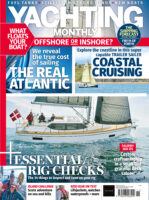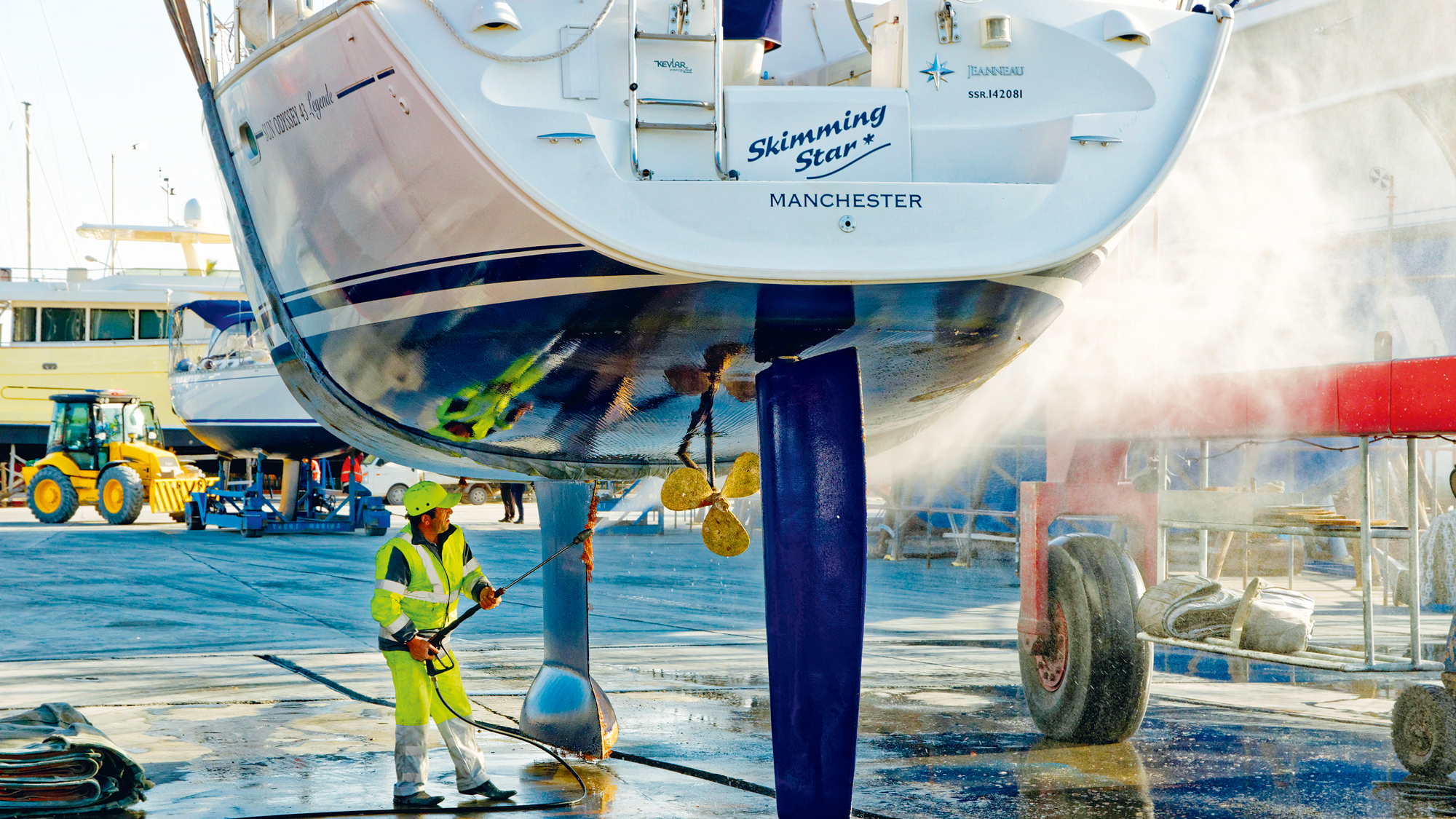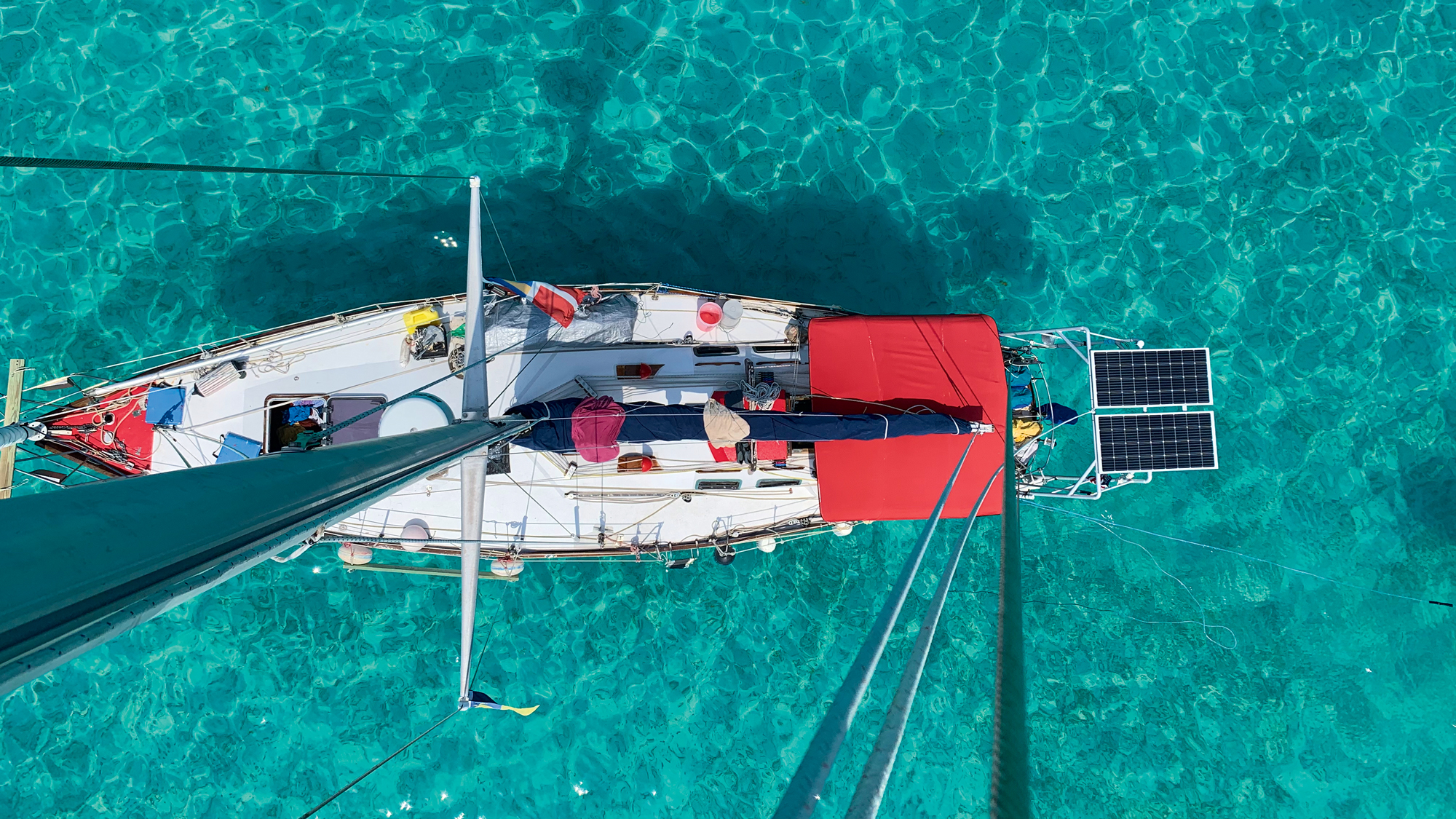Simon Hampton-Matthews asks if a radar reflector is still the best way to be seen on the water and if you really need one on your yacht
The Maritime and Coastguard Agency recommends that all UK-registered boats carry a radar reflector. Its Marine Guidance Note 349 states that: ‘All small craft should correctly and permanently install a radar reflector, passive or active (powered), that meets British Standard BS EN ISO 8729:1998 (ISO standard 8729:1997); and Owners of vessels under 15m overall length should, where practicable, fit the most effective and appropriate reflector for their circumstances’.
The MCA’s guidance repeats the SOLAS requirement for all ships of less than 150 gross tonnage to, if practicable, ‘have a radar reflector to enable detection by ships navigating by radar at both 9GHz and 3GHz.
This applies to all boats whatever their country of registration’. The guidance note was issued after the 25ft yacht Ouzo was run down by a P&O ferry off the Isle of Wight in 2006, resulting in the death of her three crew.
Note the words used: ‘permanently’ – not just carried in a locker and hoisted when conditions dictate; ‘practicable’ – in the event of an incident the owner without a reflector might be asked to justify why it was not practicable to install one.
Studies were carried out during the Ouzo investigation, the most comprehensive undertaken by the defence contractor QinetiQ. RATS has not carried out a technical evaluation, so its guidance relies on the QinetiQ report which is 17 years old. However, there seems little progress since then, so the Cruising Association (CA) still considers it relevant.
Radar frequencies
Two bands of radio frequencies are used for radar: S-band and X-band. All ships of 300 gross tonnes and passenger ships of any size are required to fit X-band radar.
Ships over 3,000 gross tonnes must fit radar sets for both bands. X-band (9GHz) is used for collision avoidance and S-band (3GHz) for deep-sea ocean use to penetrate fog, snow, rain at distances over five miles. Leisure vessels use X-band.
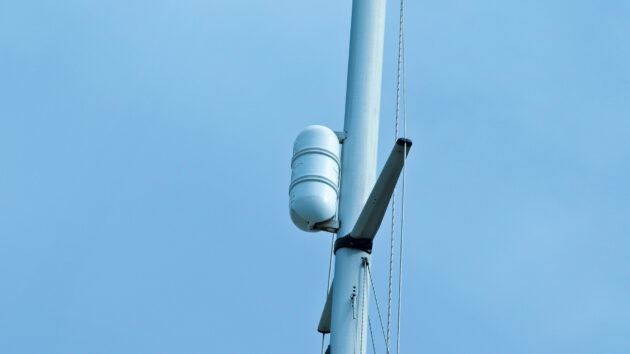
An RTE (rather than a passive reflector like this) will return a more powerful signal back to the ship on the same frequency
Active radar reflectors
Active radar reflectors, known as RTEs (Radar Target Enhancers) or radar transponders, are normally mounted at the top of the mast and are powered. When ‘painted’ by a ship’s radar they transmit a more powerful response (hence ‘transponder’) on the same frequency which the ship’s equipment will detect.
Echomax appears to be the only company producing these, making two variants, a single band X, and dual band SX. These sets do not draw a huge amount of power, and have the benefit of an audible alarm that sounds when a radar signal is detected.
For inshore use, leisure boats can fit the single, X-band transponder, but ocean-going boats, and any boat traversing waters used by vessels over 300 tonnes, should use the dual-band version covering X- and S-bands.
Echomax acknowledges that RTEs are not triggered by the lower-powered ‘broadband’ radar sets fitted to smaller vessels until quite close (1.5-3.5 miles). Early sets will not trigger a response until less than 200m away.
Article continues below…
How to winterise and refit your yacht to reap rewards next summer *Sponsored*
As the last of the summer breeze fades and the nights start drawing in, many yacht owners instinctively turn their…
Why you don’t need an anchor windlass + how to cruise without one
My first sailing boat didn’t have a windlass, and this led to a bit of unexpected drama. I was sailing…
Passive radar reflectors
Passive radar reflectors are complex-shaped metal constructions with orthogonal corners designed to catch and reflect an incoming radar signal. The larger the effective radar cross-section (RCS) area the better, though the shape is important. However, performance drops off when the vessel heels, and they must be installed correctly. Plastic-encased tube-type radar reflectors behaved really badly.
As an example, even 1° heel angle is enough to reduce the strength of the return (already between a third and a quarter of the Echomax) by a further factor of about four – yet you frequently see them taped to backstays where they do virtually nothing.
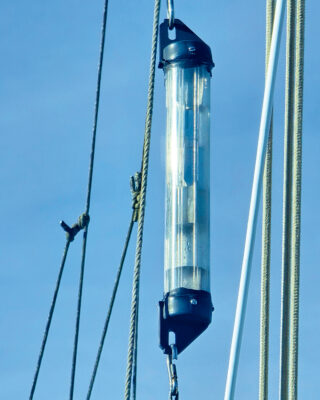
Tube-type radar reflectors are not recommended by the CA
Conclusion
The ‘money’s no object’ solution is to fit a dual-band active RTE, and a good quality passive reflector (for those times when, for whatever reason, your RTE is not powered, thereby satisfying the ‘permanently’ requirement) and an AIS transceiver. This gives you the maximum chance of being seen by another vessel electronically.
Fitting an AIS transceiver, without any radar reflector, would not absolve the boat owner from the legal requirement to permanently fit a radar reflector where practicable. It would be difficult to make the case that an owner was unable to fit a reflector on any sailing or motor yacht used for cruising.
If your budget doesn’t stretch to all three systems, then to comply with SOLAS V you must fit a passive reflector – and the best version you can afford.
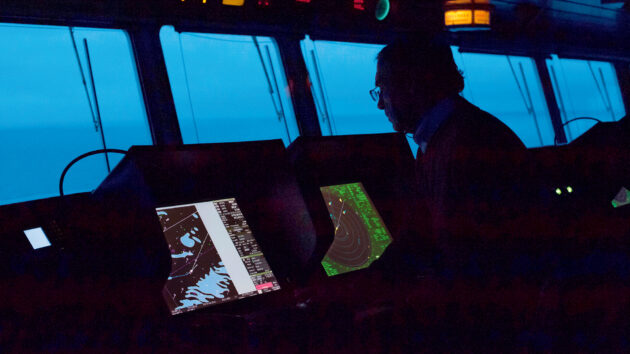
Never rely on the ability of a ship’s crew to see you in low-light conditions. Photo: Alamy
Only a passive reflector continues to protect you on that dark night or unexpected thick fog in mid-channel when you’ve suddenly lost all your electrical power. An AIS transceiver is not an alternative. The QinetiQ report makes clear that tube-type reflectors have a very poor performance, so the Cruising Association would not recommend these on any vessel.
The MCA recommends your reflector is installed and orientated in accordance with its manufacturer’s recommendations (eg, in the ‘catch rain’ position to increase its performance); and fitted as high as possible, at least 4m above the water.
Finally, skippers should be aware that even with a radar reflector their boat may still not be readily visible on ships’ radars – and therefore fitting a reflector does not absolve skippers from the obligation to navigate with caution and maintain a proper lookout at all times.
Radar target enhancer (RTE)
Ships over 3,000 gross tonnes carry two types of radar: X-band, which operates on a frequency band centred at 9.35GHz and is the type used for leisure vessels, and S-band, which is centred at 3GHz. Smaller vessels usually carry X-band only, but whatever they have on board, they are required to monitor it.
Being seen on these systems is vital to your safety at sea. After the loss of the yacht Ouzo in 2006, following a close encounter with a large vessel, much research has been done on how it might come about that a small yacht would not be seen by a ship equipped with state-of-the-art radar equipment. One of the main findings was to expose the inefficiency of some types of passive radar reflector, which in turn promoted interest in another technology – the radar target enhancer (RTE).
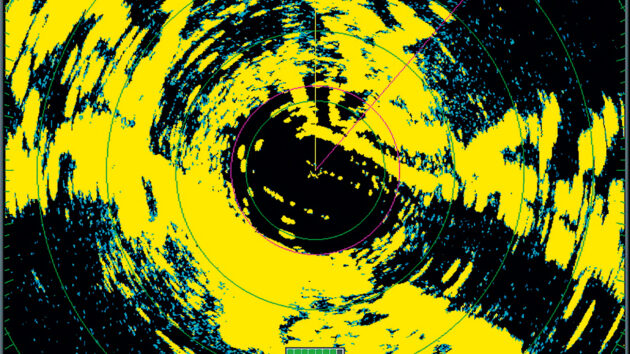
Having a radar reflector doesn’t mean you will be seen – so always keep a proper look out
Radar cross section (RCS)
Radars respond to a target’s Radar Cross Section (RCS) – that’s how reflective the target is to radar pulses, and is not necessarily related to its size. For example, at most orientations a slab-sided container ship presents big, flat panels to radar and will give strong returns, but when the ship is bows-on to the radar the returns will be weaker, as the angled panels of the bow scatter the signal.
Stealth vessels take advantage of this effect to minimise their RCS by using many facets to scatter an incident radar pulse, resulting in a minimal or zero strength return to the receiver.
Any radar reflector must attempt to improve a vessel’s RCS, just like hoisting a big orange flag would make a vessel more visible to the eye. Passive reflectors aim to do this with designs that return strongly in all directions, but their size limits the amount of the incident pulse they can collect and hence the strength of the return.
RTEs artificially enhance a boat’s RCS by detecting an incident radar pulse and sending back a stronger return at the same frequency. This means that the vessel will appear or ‘paint’ more reliably on each scan of the radar (but will not make the target bigger on the screen). The more often an object paints, the more likely it is to be detected and tracked by ARPA, the Automatic Radar Plotting Aid used on a ship’s radar sets. The performance of a radar reflector based on its RCS at all viewing angles is known as the Stated Performance Level.
Stated performance level (SPL)
In an ideal world, a passive or active radar reflector’s radar cross section would be the same from whatever angle it is viewed. However, due to a combination of design constraints and the limits imposed by where it is mounted (shadows from the mast, rigging etc), this is impossible to achieve.
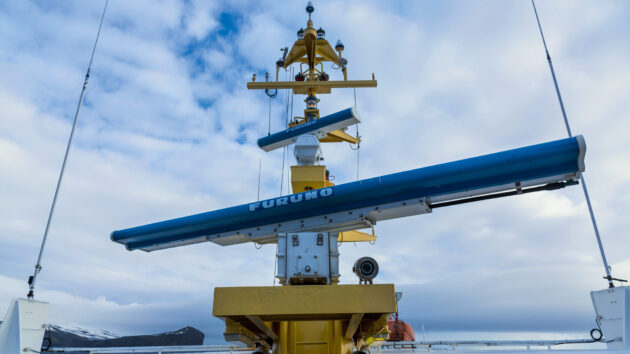
Large ships must be equipped with both S-band and X-band radar systems
There’s little a manufacturer can do about where their unit is fitted, but the performance of an RTE in an ideal situation is tested before it is approved, and the reflector’s performance distilled to a number known as the Stated Performance Level (SPL).
This is defined as the value exceeded by the reflector’s RCS for 280° of the total (360°) viewing angle, and with no nulls (abrupt reductions in RCS below the SPL) greater than a 10° width of arc. The ISO8729 Part 2 specification demands that the SPL should not be less than 7.5m2 for X-band and 0.5m2 for S-band, when the vessel (and reflector) are heeled by 20°.
Ouzo tragedy
On an August evening in 2006, a Sailfish 25, Ouzo, set out from Bembridge, Isle of Wight, headed for Dartmouth. Two days later, the drowned body of one crew member was found in the sea, ten miles south of the Nab Tower. The bodies of her two other crew members were recovered from the sea the following day.
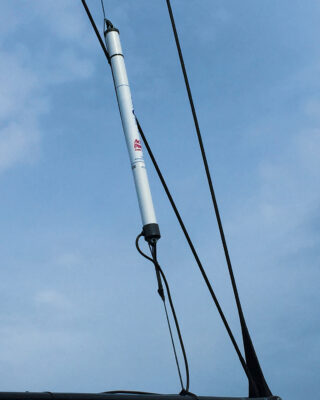
Echomax transponder specially designed to be fixed to a yacht’s spreaders
Accident investigators concluded that Ouzo had passed down the side of the P&O ferry Pride of Bilbao and been swamped by the ferry’s wake before quickly capsizing, giving the crew no time to send out any kind of distress message. Ouzo was not seen or detected by the bridge team on Pride of Bilbao.
Despite extensive surface and sub-surface searches, no trace of Ouzo’s wreckage has ever been found. The QinetiQ report on the incident, cited by the Cruising Association, concluded that Ouzo would have been detectable by the Pride of Bilbao crew if Ouzo had had a radar detector with an RCS of 10m2 in X-band and 1m2 in S-band.
Be seen by commercial vessels
Fishing vessels and commercial vessels generally use SOLAS-approved radars, so if you want to be seen by these commercial vessels, check that your yacht’s type of radar reflector is compatible with these radars. Modern radar approved to IEC-62388 will detect a vessel with a standard passive radar reflector before an active reflector is triggered.
So fitting a passive reflector means you would be seen in line with the IMO performance criteria. Modern processing techniques vary from one system to another, so being seen with an active radar reflector will depend on the individual commercial vessel’s radar’s processing technique.
Our thanks go to the Cruising Association for their help with this article:
Founded in 1908 to meet the needs of the cruising community, the Cruising Association is acknowledged as a leading organisation for sail and motor cruisers with over 6,400 members worldwide. It is a trusted source of cruising knowledge, information and advice. See more at www.theca.org.uk
Enjoyed reading this?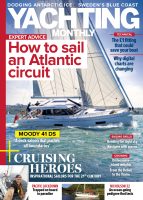
A subscription to Yachting Monthly magazine costs around 40% less than the cover price, so you can save money compared to buying single issues.
Print and digital editions are available through Magazines Direct – where you can also find the latest deals.
YM is packed with information to help you get the most from your time on the water.
-
-
- Take your seamanship to the next level with tips, advice and skills from our experts
- Impartial in-depth reviews of the latest yachts and equipment
- Cruising guides to help you reach those dream destinations
-
Follow us on Facebook, Twitter and Instagram.
Note: We may earn a commission when you buy through links on our site, at no extra cost to you. This doesn’t affect our editorial independence.

